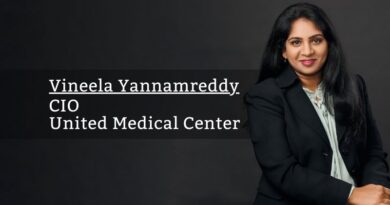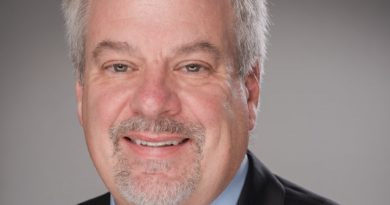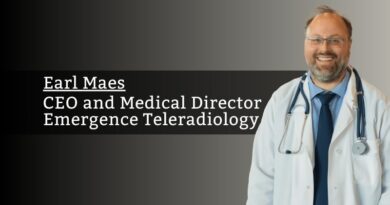Opportunity from Tragedy – Technology during COVID
By Tony S. Reed, EVP & Chief Medical Officer, Temple University Health System
Never has our country been faced with as many challenges to overall health and well-being. In 245 years, we have endured wars, social unrest, pandemics, depressions, poverty, and a pandemic during a world war. Today, the United States faces three pandemics that claimed a combined half-million lives in a single year. Three hundred forty-nine thousand lives have been lost to COVID-19 in 2020 as per WHO, 2021. Eighty-one thousand people died from opioid overdose in the 12 months preceding May 2020 as per CDC, 2020 and forty-three thousand lives were lost to gun violence during 2020 as per Gun Violence Archive, 2021. These pandemics meld with the turmoil of social unrest, racial justice issues, overwhelming disparities in access to high-quality healthcare, and inequities in the social determinants of health. By year’s end, 2020 became the year we would rather not remember but will never forget.
The year passed not without brightness and hope, however. The technological resources we once took for granted became staples to our lives. Home broadband access, online shopping for everything from vehicles to groceries, social media and video gatherings, and telecommuting all took center stage in the American way of life. Businesses quickly adapted work-at-home strategies to achieve productivity, schools developed creative learning environments, restaurants and stores redesigned 20th-century business models into 21st-century success stories, and most importantly, healthcare took a giant leap forward. Prior to COVID-19, telehealth held a relatively small role in American medicine. In 2019, 11% of consumers in America used telehealth, with an estimated $3 billion revenue for US healthcare companies as per Bestsennyy, Gilbert, Harris, & Rost, 2020. During 2020, telemedicine’s financial value rose to $30 billion, with 20% of all medical visits occurring via telemedicineas per Cheney, 2020. 57% of American residents have now experienced at least one telemedicine encounter. The Centers for Medicare and Medicaid Services started to reimburse providers for telehealth services, fueling growth and prompting other insurers to respond with similar fee structures. While unfortunate it took a grave situation such as a pandemic to spawn revolutionary change of this nature, the push has given cause for health leaders to imagine a future of telehealth consumerism and expansion of services beyond traditional borders.
At Temple University Health System (TUHS), we evolved with the transition to lockdowns and stay-at-home orders. TUHS serves an urban, underserved minority population who live in the poorest zip codes in the country. The average life expectancy in NorthPhiladelphia neighborhood is 20 years shorter than those of Philadelphians who live 3 miles south in the center city – the birthplace of America. Broadband is not a commodity and many households do not have smartphones or other technological advances. The Kensington neighborhood, where the TUHS-Episcopal Campus is based, is a known center for opioid sales that attracts buyers and sellers from a broad region of southeastern Pennsylvania, New Jersey, and Delaware. Victims of gun violence often come to the TUHS-Main Campus Level 1 Trauma Center, where they meet our patient advocates – survivors of violence themselves. The Temple University Center for Urban Bioethics and the TUHS Center for Population Health partner to deliver care in the streets via mobile vans and through community health workers trained to help navigate the US healthcare system.
Our medical practices, which had previously completed a meager 10,000 telemedicine visits, have quickly adopted telehealth technology now and delivered over 100,000 telemedicine visits in just nine months
COVID-19 grounded many public and population health resources. A grant from the state allowed us to provide flip phones to patients in recovery to maintain contact. Other patients with smartphones connected to their addiction recovery specialists via FaceTime, Zoom, and Doxy.me. The Temple mobile vans became COVID-19 testing centers and will now become vaccination centers. Our medical practices, which had previously completed a meager 10,000 telemedicine visits, have quickly adopted telehealth technology now and delivered over 100,000 telemedicine visits in just nine months.
Inside the hospitals, TUHS developed COVID-19 rounds. The Chair of Pulmonary Medicine, Dr. Gerard Criner, an international expert in pulmonary diseases, including COVID-19, rounded on every one of the 5,000 patients admitted with COVID over these past 11 months through daily telemedicine rounds with our teams of physicians, nurses, and pharmacists covering the COVID units. 35 COVID clinical trials occurred at Temple, including remdesivir, monoclonal antibodies, steroid pulse therapy, and vaccine development. Dr. Criner led a weekly teleconference to direct each of the trials.
In our emergency department, physicians used telemedicine to maintain access to specialists and sub-specialists across our five campuses. Patients with broken bones could be evaluated virtually by orthopedists and only transferred to the orthopedic facility when necessary. Patient advocates could visit victims of gunshot violence via video visits to help prevent the isolation and fear often felt by these patients. Psychiatrists performed tele-consultative visits for therapy in the COVID units for patients at home or in our primary care offices. As the pandemic progressed, we began to provide telemedicine services with regional health systems to better direct potential transfers to our overcrowded facility.
Patient experience also developed video visit protocols. The pandemic forced us to close to visitors – separating families from their loved ones during their time of greatest need. Patient advocates worked tirelessly with iPads to help keep families close through televisits. Physicians and nurses updated families daily through audio and video technology. Administrators have met with physicians, patients, and families on video rounds to help smooth the course of the hospital stay.
If we can take one gift from COVID-19, it is the rapid adoption of technology in direct patient care. Advancements in televisits, telemedicine, and telehealth have sprung forth in leaps and bounds. Those advancements seed the possibilities for future growth if we continue to search for ways to harness their power. Let us hope it does not take the second year of a pandemic to continue that quest.



